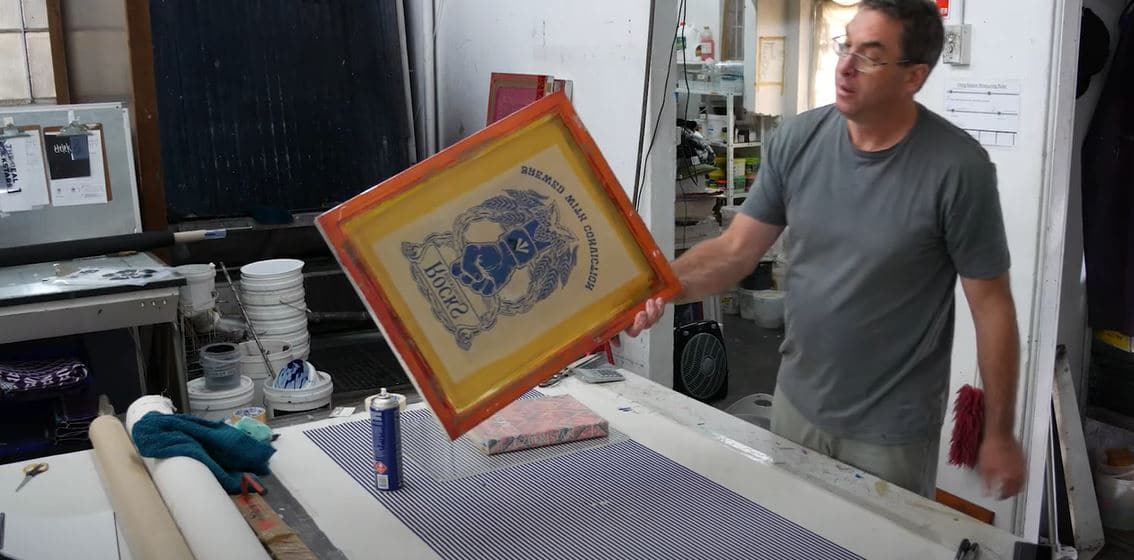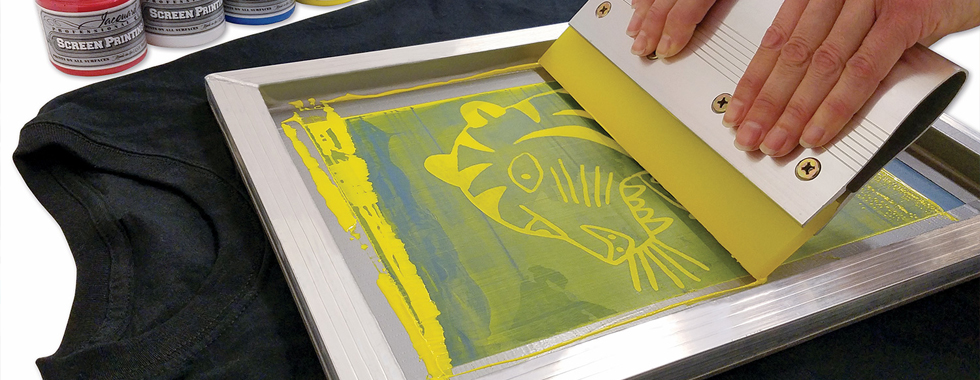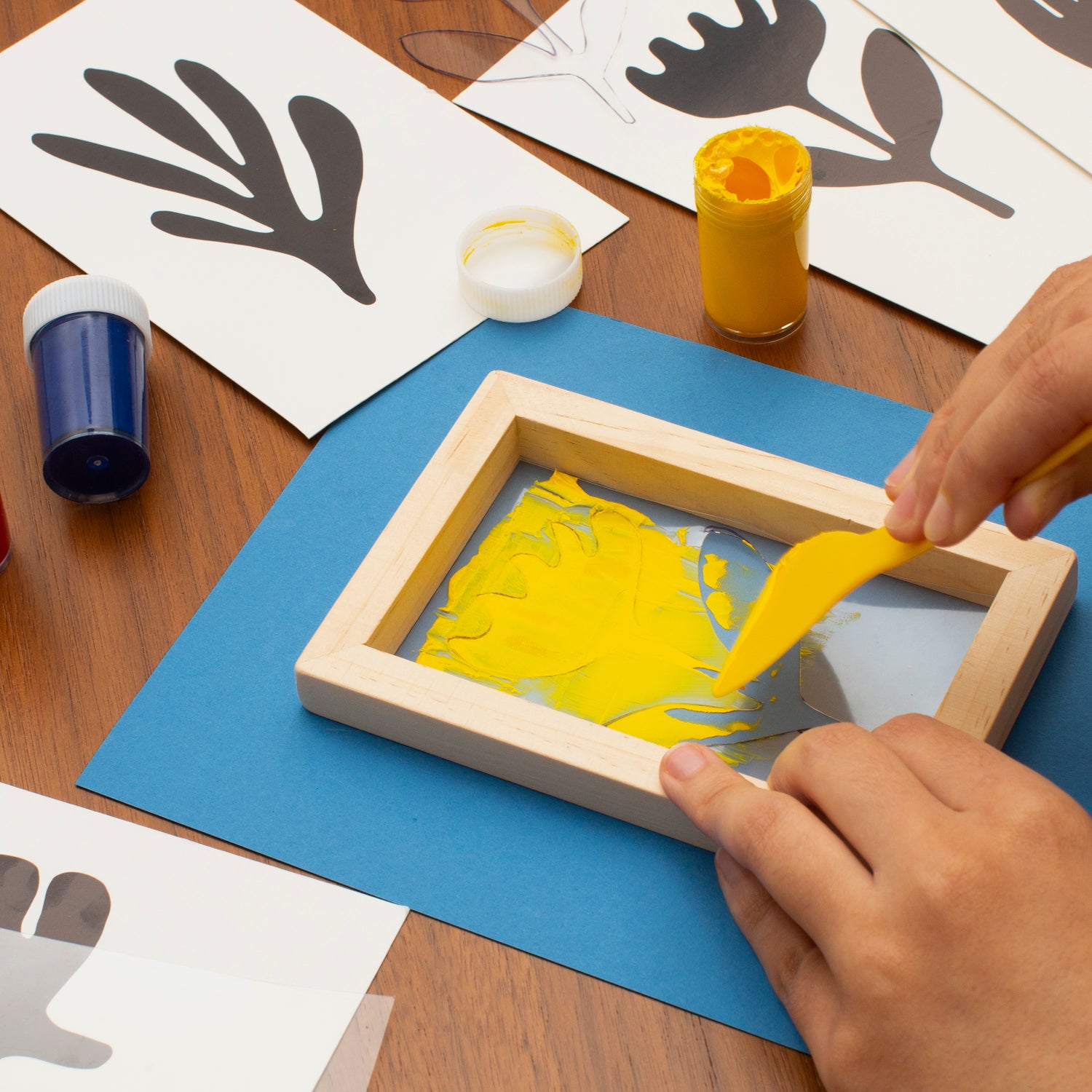ChatGPT said: Top advantages to choose 10:9 Design Embroidery for professional customization
Discover the Different Sorts Of Screen Printing Techniques for Your Next Job
Screen printing uses a varied series of techniques that can enhance any creative task. From standard techniques like serigraphy to modern technologies such as direct-to-garment printing, each method has its unique benefits. Specialized choices, consisting of green and metal inks, introduce much more possibilities. Understanding these methods can greatly affect the last end result. Nevertheless, the obstacle hinges on picking one of the most appropriate technique for specific needs and wanted impacts. What aspects should one think about?

The Fundamentals of Screen Printing
Screen printing may appear facility, it is fundamentally a simple process that entails moving ink through a mesh screen onto various surfaces. The method starts with the creation of a stencil, which defines the layout to be published. This stencil is affixed to a mesh screen, normally made of polyester or nylon. As soon as the stencil is in place, ink is put on the screen and pushed with the mesh utilizing a squeegee, leading to the preferred pattern being published on the underlying product.
Screen printing can be carried out on a large range of substrates, including plastic, paper, and material, making it a flexible choice for various jobs. The procedure enables lively colors and elaborate styles, making it popular in industries such as fashion, art, and marketing. Recognizing these fundamentals gears up people with the fundamental expertise needed to explore even more sophisticated techniques in screen printing.
Traditional Screen Printing Techniques
Conventional screen printing strategies have actually been employed for centuries, maintaining the craftsmanship and virtuosity of this method. This strategy uses a mesh screen to transfer ink onto a substratum, such as material or paper, enabling vivid and long-lasting layouts. The process starts with developing a pattern, which blocks specific areas of the screen to regulate where the ink will be applied.
One popular method is serigraphy, typically used for minimal editions and imaginative prints. An additional is making use of water-based inks, which are eco-friendly and provide a soft feeling on textiles - 10:9 Design Embroidery. Additionally, conventional techniques can consist of manual printing, where artisans apply ink with a squeegee, ensuring precision and focus to information
These strategies stay valued in the sector for their responsive top quality and the unique structures they create, attracting both customers and designers that value the heritage of screen printing.
Digital Screen Printing Innovations
As the need for faster manufacturing and personalization in the printing market has actually risen, electronic screen printing technologies have actually become a game-changer. This innovation mixes standard screen printing approaches with electronic processes, enabling for rapid prototyping and intricate styles that were formerly challenging to accomplish. One significant advancement is the intro of direct-to-garment (DTG) printing, which facilitates top quality, full-color prints on various fabrics without the demand for screens. Additionally, advancements in ink formulations have actually brought about environment-friendly choices that maintain vivid colors while decreasing ecological effect. Making use of automated systems better enhances manufacturing, lowering labor expenses and boosting accuracy. These innovations not just cater to little batch orders and individualized designs yet likewise allow for quicker turn-around times, making them suitable for companies concentrated on meeting customer demands in a busy market. Digital screen printing, subsequently, represents an essential development in the domain of printing methods.
Specialized Screen Printing Techniques
Exploring specialized screen printing methods exposes a varied range of strategies that push the borders of creativity and performance in the printing industry. Among these, glow-in-the-dark inks supply a distinct visual impact, making layouts come alive in low-light conditions. Metal inks, recognized for their shimmering coating, include a touch of high-end to published products. Another ingenious approach is discharge printing, which removes dye from the textile as opposed to adding ink, causing a soft, vintage feel. High-density printing produces an elevated texture on the surface, boosting tactile engagement. Furthermore, water-based inks are getting appeal for their vibrant colors and minimized ecological impact. Each of these specialty methods satisfies certain design requirements, making it possible for brand names and musicians to develop standout products that reverberate with their target markets. By leveraging these techniques, businesses can elevate their screen printing jobs to new elevations, ensuring memorable perceptions.
Eco-Friendly Screen Printing Options
Environment-friendly screen printing choices are obtaining grip as the sector changes in the direction of sustainability. Sustainable ink options and the use of biodegradable materials are crucial elements in lowering the environmental effect of the printing process. By adopting these practices, screen printers can contribute to an extra lasting future while maintaining top quality results.
Sustainable Ink Selections

Biodegradable Products Usage
As the screen printing market develops, the consolidation of naturally degradable materials is becoming increasingly vital for environmentally aware techniques. Makers and designers are now checking out inks and substrates made from natural, eco-friendly sources that break down more effectively than standard equivalents. These biodegradable choices lower plastic waste and minimize environmental effect, lining up with the growing need for sustainable products.
Common instances include water-based inks and natural cotton materials, both of which reduce harmful chemicals and promote eco-friendliness. Brand names that embrace these materials commonly improve their market allure, drawing in consumers that prioritize sustainability. As awareness of ecological issues remains to rise, the change towards naturally degradable products in screen printing is likely to obtain momentum, promoting a greener sector standard.
Picking the Right Method for Your Task
Exactly how can one establish one of the most suitable screen printing method for a specific job? The choice rests on a number of factors, consisting of the material to be published on, the intricacy of the design, and the preferred manufacturing quantity - 10:9 Design Abilene. Direct-to-garment printing is optimal for detailed designs with many shades, while typical screen printing excels for larger runs of easier graphics.
Furthermore, factor to consider of the end-use of the printed product is necessary. For exterior applications, techniques that offer sturdiness and climate resistance, such as plastisol ink, may be chosen. On the other hand, environmentally-conscious jobs might gain from water-based inks or eco-friendly materials.
Eventually, comprehending the job's distinct demands enables an enlightened selection, making certain both visual allure and useful durability. By examining layout intricacy, product compatibility, and production scale, one can efficiently select one of the most appropriate screen printing technique to meet their task's objectives.
Often Asked Concerns
What Is the History of Screen Printing?
Screen printing originated in ancient China around 1000 AD, developing via Japan and Europe. By the 20th century, it ended up being prominent in commercial art and fashion, transforming how designs were produced and distributed globally.

How Do I Prepare Artwork for Screen Printing?
To prepare art work for screen printing, one have to ensure high resolution, make use of a suitable color setting, develop separate layers for every shade, and transform message to outlines, ensuring compatibility with the printing process and desired result.
What Products Are Ideal for Screen Printing?
The most effective materials for screen printing include top notch inks, sturdy displays, and ideal substratums like cotton, polyester, or blends. Additionally, utilizing proper solution and mops can improve the printing process and final outcomes.
Can I Screen Print in the house?
Yes, screen printing at home is possible. With the ideal products, arrangement, and strategies, people can produce top notch prints. However, careful factor to consider of workspace and equipment is important for successful results.

What Prevail Errors in Screen Printing?
Usual mistakes in screen printing consist of read more inappropriate exposure times, inadequate ink consistency, imbalance of displays, insufficient cleaning of materials, and disregarding to test prints. These mistakes can jeopardize the top quality and accuracy of the last product.
Screen printing may appear complicated, it is basically a simple procedure that includes moving ink through a mesh screen onto various surface areas. As the need for faster manufacturing and personalization in the printing sector has risen, digital screen printing technologies have emerged as a game-changer. Checking out specialty screen printing techniques reveals a diverse range of strategies that press the borders of imagination and functionality in the printing market. The finest products for screen printing include top notch inks, durable screens, and suitable substratums like cotton, polyester, or blends (10:9 Design contact). Typical blunders in screen printing include improper direct exposure times, inadequate ink consistency, misalignment of screens, inadequate cleaning of products, and ignoring to examine prints